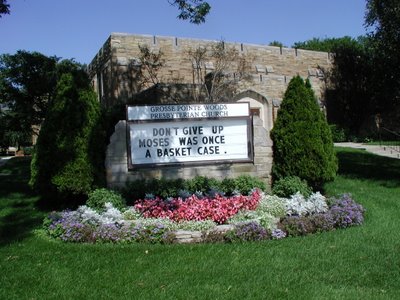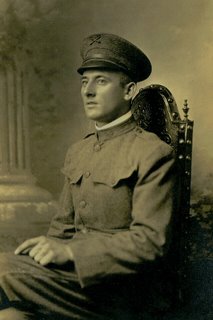I have spent the last year getting to know my new sewing machine. It is both a miracle of Swedish engineering and a tribute to über-grammatical translation:
The flat side of the spool holder shall be pressed firmly against the spool. There shall be no space between the spool holder and the spool.
I salute, sew my seam and reminisce.
I learned to sew on my grandmother’s treadle machine. That’s Nana round the corner. There’ll be more about her later. (You already met
Garby down the Lock on Christmas Eve, 2005.) The machine sat by the window in Nana’s dining room/living room/all purpose room. My mother did not inherit Nana’s sewing skills, but she did have her knitting skills. It was my mother’s older sister, my Auntie Doris, who was the sewer. She was, in fact, a professional seamstress. She never used patterns and I still remember some of the dresses she made for me. How I loved my summer school uniform: a green and white striped dress and a green and white checked dress. In fact she made all our dresses, my mother’s and mine, until her untimely death in her early forties.

Here she is on her wedding day to Uncle Bill. I thought he was the handsomest man alive and he was as gentle and loving as Auntie Doris. It was one of life’s cruel blows that he too died shortly after she did.
I do remember gong round to Nana’s as a teenager and sewing some dresses on her machine. It had one stitch and one direction, but it worked fine. What I remember most, however, is the procedure Nana supervised for my mother every once in a while. It was called “sides to middle.”
Remember, these were postwar years and everything had to be purchased with coupons. Nothing could be wasted. Our sheets were cotton and—in the spirit of Henry Ford—they were any color we wanted, as long as it was white. When our sheets wore thin in the middle, my mother cut them in half and sewed the two side selvedges together. Voilà, new sheets.
I don’t know what happened to that old sewing machine. Mine came with a video, fancy attachments and a couple of instruction books. I wish Nana and Auntie Doris could have had something half as nice.
 I wonder if the Presbyterian Church ever holds an awards show (and the Simon Peter for the best homily based on a quote from a pop song, George W. Bush or South Park goes to ...). If they do and they need an emcee, they need look no further. The pastor of this church in Grosse Pointe Woods has been deservedly featured in many articles. The signage outside his church is the epitome of wit. I had to go home and get my camera to capture this message.
I wonder if the Presbyterian Church ever holds an awards show (and the Simon Peter for the best homily based on a quote from a pop song, George W. Bush or South Park goes to ...). If they do and they need an emcee, they need look no further. The pastor of this church in Grosse Pointe Woods has been deservedly featured in many articles. The signage outside his church is the epitome of wit. I had to go home and get my camera to capture this message.










